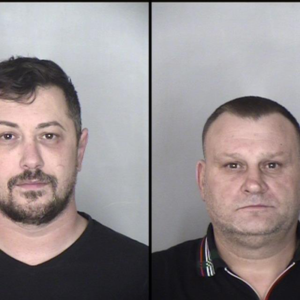Emma Argues with Principal Figgins
In the bustling corridors of William McKinley High School, tensions often ran high, but none matched the intensity when Emma Pillsbury found herself at odds with Principal Figgins. Emma, with her meticulous organization and unwavering dedication to the students’ well-being, often clashed with Figgins, whose priorities sometimes seemed more aligned with bureaucracy than with the students themselves.
It was a crisp autumn morning when the latest clash occurred. Emma, with her trademark pink cardigan and perfectly arranged files, marched purposefully towards Principal Figgins’ office. She had a matter of great importance to discuss – the allocation of funds for the school’s art program, something she held dear to her heart.
As Emma entered the office, she found Principal Figgins buried under a mountain of paperwork, his brow furrowed in concentration. Without missing a beat, she launched into her argument, her voice unwavering despite the tension crackling in the air.
“Principal Figgins, I’ve reviewed the budget allocation for this semester, and I must express my concern regarding the funding for the art program. It’s imperative that we invest in the creative talents of our students. Studies have shown the positive impact of arts education on academic performance and overall well-being. We cannot afford to neglect such a vital aspect of their development.”
Figgins, ever the picture of composure, listened attentively to Emma’s impassioned plea. However, his response was predictably bureaucratic.
“Emma, while I appreciate your dedication to the arts, we must prioritize within the constraints of our budget. Our resources are finite, and we must allocate them where they will have the most significant impact. Academic achievement and standardized test scores are crucial metrics by which our school is evaluated. We cannot jeopardize those for the sake of extracurricular activities.”
Emma’s frustration was palpable as she countered, her voice tinged with indignation. “But Principal Figgins, the arts are not just extracurricular activities; they’re essential for nurturing creativity, critical thinking, and emotional intelligence. These are skills that our students will carry with them long after they leave these halls. We owe it to them to provide a well-rounded education that encompasses more than just test scores.”
As the debate raged on, the lines between professional disagreement and personal animosity began to blur. Emma, with her unwavering idealism, refused to back down, while Figgins, bound by the constraints of his position, remained resolute in his stance.
Hours passed as they argued back and forth, each refusing to yield ground. It was only when the sun dipped below the horizon, casting long shadows across the office, that they finally reached a compromise.
In the end, Emma’s persistence paid off. While she didn’t secure the full funding she had hoped for, Principal Figgins agreed to a modest increase in the art program’s budget. It was a small victory, but a victory nonetheless.
Conclusion
As Emma left Principal Figgins’ office, exhaustion etched into the lines of her face, she couldn’t help but feel a sense of satisfaction. Though they may have clashed, she knew that their shared commitment to the students’ well-being would always prevail in the end.
In the halls of William McKinley High School, where egos clashed and ambitions soared, Emma Pillsbury’s unwavering dedication to her students remained a guiding light. And though she may have argued with Principal Figgins on that crisp autumn morning, her passion for nurturing the creative spirit of the next generation burned brighter than ever before.







